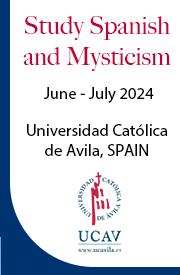My wife experienced the Battle of Britain in utero. Her parents, refugees from Vienna, made their way to the United States, and she was born in the Bronx on Inauguration Day, 1941. She was born, that is, on March 4th, the old inauguration day before it was changed in the 1930s. I once pointed out that we know many people in their eighties, and that someone having his eightieth birthday on the day she was born, was born on the day of Lincoln’s First Inaugural.
She did not find the same charm in that point that I did. But it may remind us that we are not as far as we might think from that gravest crisis of our “house divided.” That crisis involved at the core the question of “the human person” — whether a whole class of human beings could be removed from the protections of the laws. The question, said Lincoln, was “whether a negro is not or is a man.” And in our own day the question in another form is whether the human offspring in the womb is anything less than a human person, bearing rights that the rest of us would be obliged to respect.
Barack Obama flew to Washington, then to Philadelphia, only to make his way by train along the path taken by Lincoln on the way to that first inauguration. Obama has professed to take Lincoln as his model. But as we have had the occasion to point out, he has also floated serenely past any grasp of the issue that marked, for Lincoln, the crisis that brought forth his mission.
Obama seems to forget that, as Lincoln made his way by train, stopping in Trenton and Philadelphia and other places, he was not simply basking in the adulation of the crowd. Seven states had already seceded. Lincoln was seeking to gauge, from the response of the crowds, whether the people would stand with him if the movement toward secession truly advanced to the breakup of the Union and the onset of war.
At the time of Lincoln’s inauguration, Virginia had not yet joined the secession. Nor had North Carolina, Tennessee, Arkansas, and of course the border states of Maryland, Delaware, Kentucky, Missouri. A critical part of his task during the inaugural address would be to appeal to those states to preserve the cords of principle and memory that connected them in the Union. Despite the hoopla in the media, nothing in the inauguration of Obama can even approach the gravity and consequence of that inauguration and the problem that Lincoln was seeking to treat in his artful address. There was, of course, a poetic force that Obama really cannot match, despite the reporters fainting in admiration.
But Lincoln’s speech also contained extended analytic passages, quite necessary to his argument, and yet well beyond anything we are likely to hear today in speeches given to modern audiences. And so Lincoln would raise the question, “why may not any portion of a new confederacy, a year or two hence, arbitrarily secede again, precisely as portions of the present Union now claim to secede from it?” In the case of “West Virginia” that did happen. Why couldn’t counties secede from their seceding states, or towns secede from the counties? And finally, why couldn’t individuals secede from the secession to the secession to the secession? “Plainly,” said Lincoln, “the central idea of secession, is the essence of anarchy,” a world without authority and binding law. And the new Confederacy of seceded states would brook no such principle.
Lincoln’s appeal at that critical moment was to the Constitution. It was the ground on which the disaffected states could still hold together with the Union. But Lincoln also understood that the appeal to the Constitution was the appeal to a ground of secondary importance. As Lincoln understood, the Union was older than the Constitution; it began, not in 1789, but in 1776, with the Declaration of Independence. It began with that “proposition” as he called it, “the father of all moral principle” in us, “all men are created equal.” What we refer to as the Constitution was really the second constitution, framed and adopted after the first one had proved defective. Lincoln once invoked Proverbs: that a word fitly spoken was like an apple of gold in a frame of silver. The frame was made for the apple, not the apple for the frame. The Constitution was made for the Union, not the Union for the Constitution. And the heart of the Union, its first principle, was that “proposition,” that respect for the human person, as the ground and the central concern of the law.
The crisis of our own day cannot compare to that which faced Lincoln, though the issues may run as deep. With our own strains in mind, we may still say, with Lincoln that “though passion may have strained, it must not break our bonds of affection”:
The mystic chords of memory, stretching from every battle-field, and patriot grave, to every living heart and hearthstone, all over this broad land, will yet swell the chorus of the Union, when again touched, as surely they will be, by the better angels of our nature.















